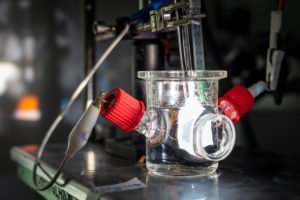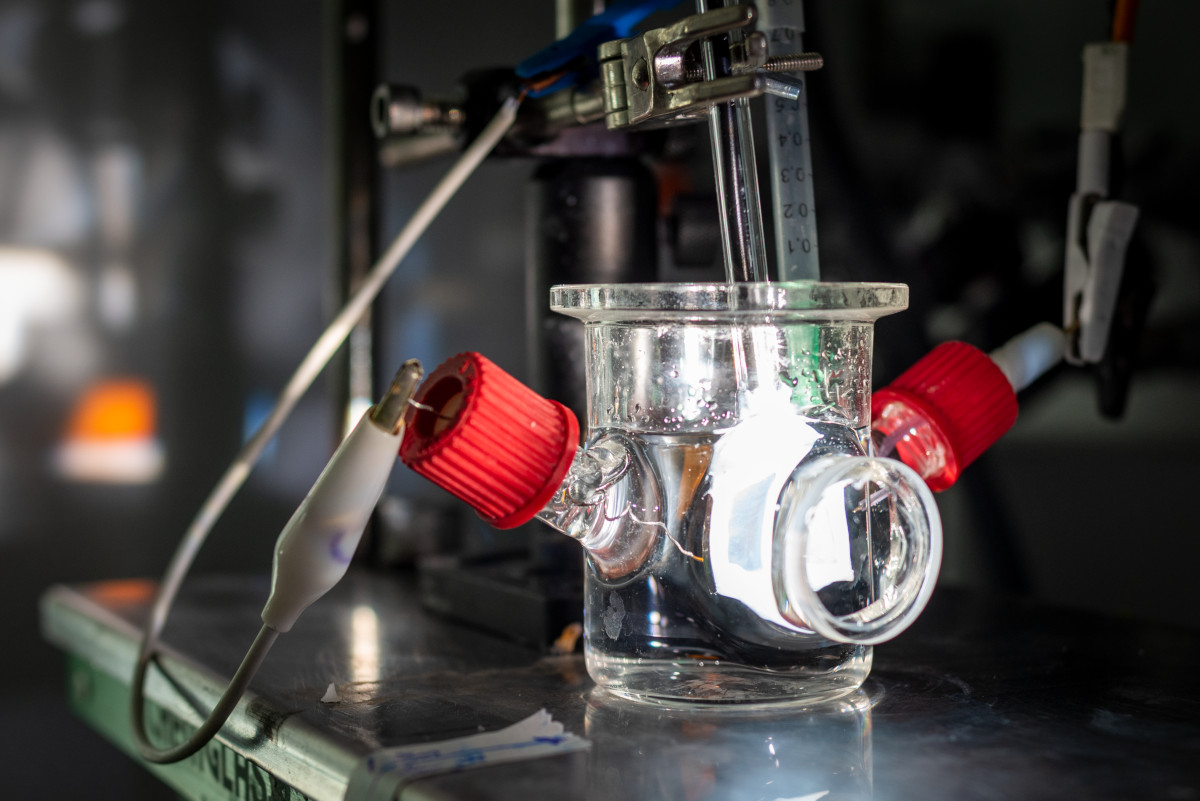A research team led by Francesca Toma, a staff scientist in the Liquid Sunlight Alliance (LiSA) and Chemical Sciences Division (CSD), has developed an artificial photosynthesis device with remarkable stability and longevity as it converts sunlight and carbon dioxide into ethylene and hydrogen—two promising sources of renewable fuels. The model solar fuels device they designed, known as a photoelectrochemical cell, is made of cuprous oxide (Cu2O). The compound’s strength as an artificial photosynthesis material—its high reactivity to light—is also its weakness, as light causes the material to break down within just a few minutes of exposure.

This photoelectrical cell, a type of model solar fuels device made from promising artificial photosynthesis material cuprous oxide (Cu2O), was designed by Francesca Toma, a staff scientist in the Liquid Sunlight Alliance and Chemical Sciences Division. (Credit: Thor Swift/Berkeley Lab)
The team used electron microscopy at the Molecular Foundry and ambient pressure X-ray photoelectron spectroscopy (APXPS) at the Advanced Light Source to reveal how the device degrades with use, then demonstrate how to mitigate those processes. Interim Molecular Biophysics and Integrated Bioimaging (MBIB) Division Director Junko Yano conducted the APXPS experiments with Ethan Crumlin, CSD staff scientist and APXPS Photo Science Operations program lead. They revealed an unexpected clue: cuprous oxide corrodes even faster in water containing hydroxide ions, which are negatively charged ions comprised of an oxygen atom bound to a hydrogen atom.
Additionally, computer simulations performed at the National Energy Research Scientific Computing Center (NERSC) showed that electrons aren’t solely to blame for cuprous oxide’s corrosion, charge carriers called holes also play a part.
“Understanding how materials transform while they are functioning in an artificial photosynthesis device can enable preventive repair and prolonged activity,” concluded Toma.
Read more in the Berkeley Lab News Center.




